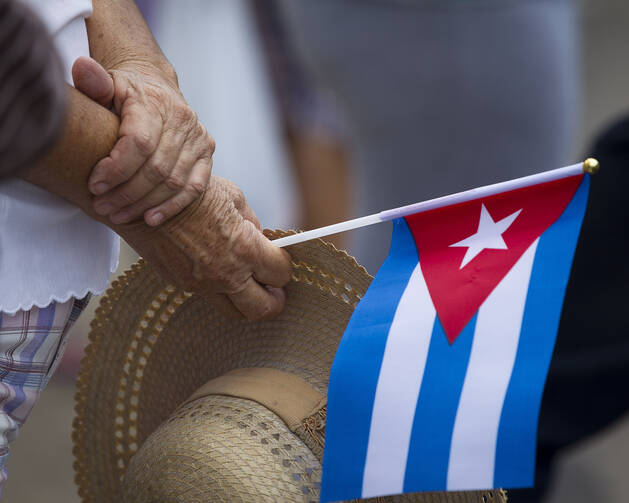It was one of the more absurd moments of America’s Cuba policy.
In 2011, as the Communist island began drilling for what may be billions of barrels of oil off its northern coast, a legitimate fear gripped the United States. That was the specter of an oil spill, a BP-style disaster choking the Florida Straits and destroying some of the world’s most precious coral reefs and marine wildlife.
It was in the interest of the United States—not least Florida’s $60 billion tourism industry—to loosen its diplomatic isolation of Cuba and let the two enemy governments cooperate in order to avoid a petro-apocalypse. Washington could relax the trade embargo and give Cuba and its foreign drilling partners access to U.S. anti-spill technology. It could let U.S. and Cuban agencies share environmental information.
But hardline anti-Communists in Congress would not hear of it. Even bilateral spill-prevention collaboration was deemed a form of aid to Cuba’s drilling efforts—and therefore a lifeline to the repressive Castro regime, whose threadbare, fuel-starved economy desperately needed the crude.
Since U.S. politicians still trembled at Florida’s Cuban-American vote in those days, the hardliners held sway.
Environmentalists were alarmed to see politics trump prudence, so they took the initiative U.S. officials could not. They and private-sector drilling experts began making visits to Cuba. There they met with officials to discuss spill safeguards and, just as important, details of the most vital but vulnerable U.S. and Cuban maritime territories—including the U.S.’s 350-mile-long Florida Reef Tract and Cuba’s Guanahacabibes National Park.
“We were building bridges,” says Dan Whittle, senior Cuba program director for the New York-based Environmental Defense Fund. “The oil-drilling issue helped us share knowledge about our respective marine resources for the first time.”
That effort received a huge boost last December when President Obama announced the United States and Cuba were re-establishing diplomatic relations. Suddenly, U.S. federal agencies like the National Oceanic and Atmospheric Administration could talk directly with their counterparts in Havana. And that conversation has been all the easier because of the groundwork Whittle and company laid years before.
So there was little surprise in early October when the two countries, at the international Our Oceans conference in Chile, announced a historic environmental cooperation pact that focuses on marine protection. Its most prominent feature is a sister-sanctuaries arrangement that pairs U.S. reserves like the Florida Keys National Marine Sanctuary and Cuba’s Guanahacabibes.
The accord’s timing is critical. Global warming and ocean acidification are threatening vital coral reef habitats in the waters that connect Florida and Cuba, and a better understanding of those connections could rescue marine life on both sides of the Florida Straits.
Take, for example, parrotfish. Their insatiable nibbling keeps corrosive algae off coral, but they are increasingly endangered in those waters. Improved knowledge of the migratory patterns of parrotfish between Florida and Cuba, which had been hampered before the recent diplomatic rapprochement, could do a lot to help revive their population. So could more coordinated bilateral efforts to prevent overfishing them.
But perhaps the most important potential benefit lies off Cuba’s shores.
Cuba’s own $2.5 billion tourism sector relies on the pristine image of its beaches and diving sites. The Catch-22, however, is that tourism growth brings heavy environmental pressures—especially as more American visitors pour in. As a result, the Castro government’s declared goal is to set aside a quarter of its coastal waters as natural preserves. But to undertake such a daunting project, Cuba needs the assistance of U.S. government agencies like the NOAA and nongovernmental organizations like the E.D.F. Enviro-activists like Whittle hope the sister sanctuaries plan is just a first step in that process.
But this mission has to please the Vatican, too. Pope Francis, after all, was a key broker in the deal to normalize U.S.-Cuba ties, and the announcement in Chile comes on the heels of his enviro-economic encyclical, “Laudato Si.’” It urges countries to take more seriously the same climate-change hazards Washington and Havana are now joining to confront.








